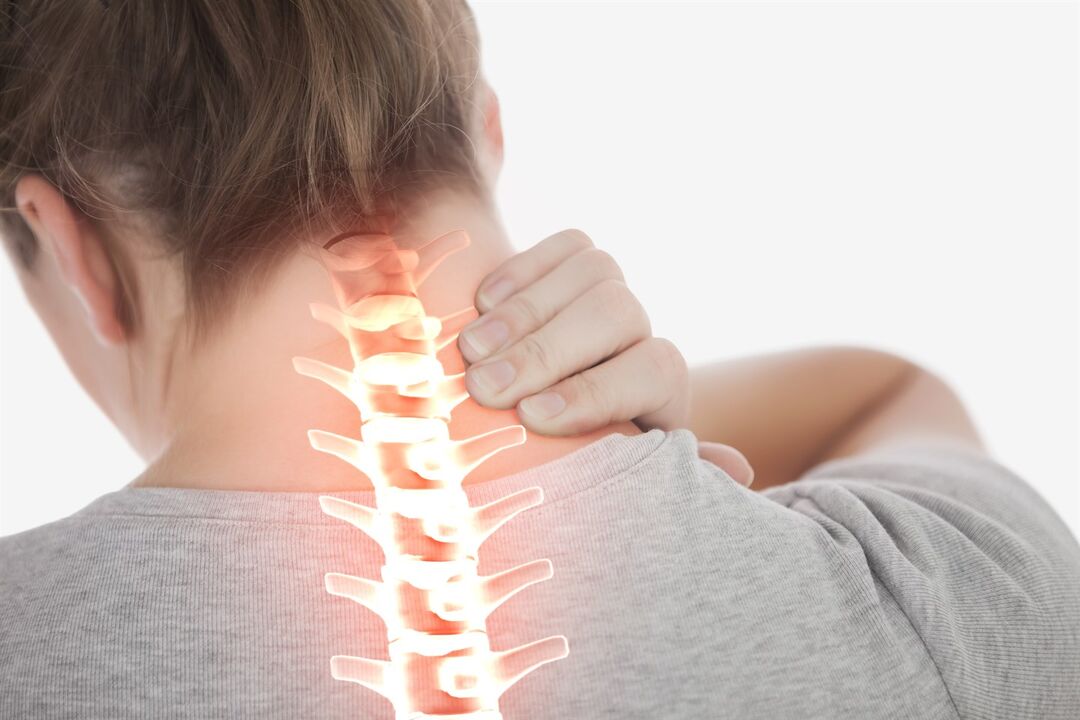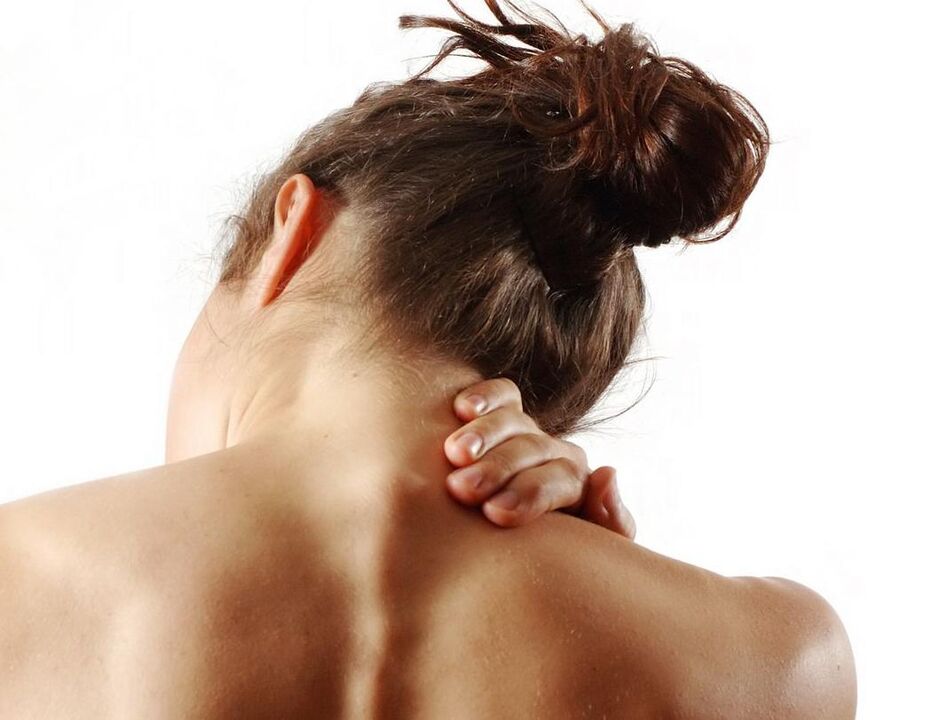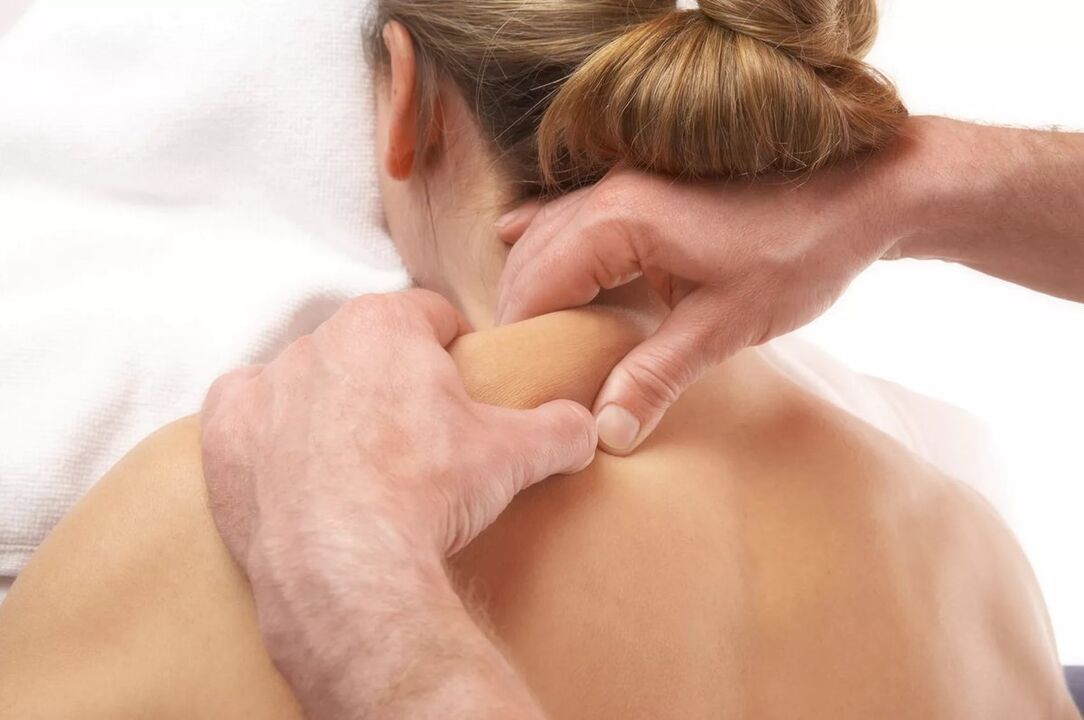What is cervical osteocartilage and how is it expressed? Osteochondrosis in the cervical area is a fairly common pathology that occurs in most cases in a sound population (from 30-60 years). Many people suffer from this disease and usually do not realize the cause of discomfort because the degenerate bias of the disease does not seem to attract attention. What is the osteocartilage of the cervical vertebrae? How to treat it?
The osteocartilage of the cervical vertebra is a degenerative disease of the intervertebral disc that can change its structure, causing it to deform itself (change of the disc, joint, vertebrae of the cervical vertebrae). As a result, osteochondrosis in the cervical area has quite obvious symptoms. The disease can be exacerbated, and if treated with osteochondrosis of the cervical spine, headaches can develop, changes in blood circulation and hernia can also occur.
Below you can see the possible causes and what symptoms of cervical vertebrae bone sp bone.
Causes of the disease

The main cause of cervical osteochondrosis is a sedentary lifestyle. Pathology is most susceptible to drivers, office workers, lovers, sitting near monitor screens. Due to the persistent sedentary images and the lack of physical fatigue, they can:
- Acts that violate the metabolic process;
- Deposit salt in the liver, kidneys, and neck;
- The degree of salt and blood flow in the lymph fluid increases.
The behavior of invading the vertebrae due to lack of nutrition from the intervertebral disc. Similarly, the possible cause of osteochondrosis in the cervical area is an imbalanced, incorrect nutrition.
The most common factors of cervical osteochondrosis:
- Too much weight, hormone imbalance;
- Strong physical exercise makes the human body heavy;
- Genetic tendency;
- Continuous stress, nerve tension;
- Impairment of posture (rheumatism, scoliosis, etc. );
- Trauma on the neck, spine;
- abnormal development of neck department, flat feet;
- Hypothermia;
- age-related changes;
- Sports activities.
Many of the above factors form the load on the cervical vertebrae, which is why muscle spasms occur. As a result, circulatory disease is manifested with reduced metabolic processes, which leads to degenerate bias. Sometimes, in cervical bone cartilage, the cause of formation may be a developing disease that can spread to bone tissue and close vertebrae. Usually, it will be physically exhausted for a long time.
If cervical osteochondral disease is not treated in the initial stage, complications are performed in the form of a hernia and herniation may occur.
Disease development stage
The progression of the cervical spine, osteochondrosis passes through some stages, which are classified by various symptoms.
Distinguish the four stages of pathological development:
- Basically, in the first stage of the disease, unsprayed smoothness of the neck bending (Lordosis) is noted. The clinical manifestations are insignificant, severe pain in the neck can be observed and exacerbated by head turns and muscle tension. There is no drug treatment at this stage, mainly changing nutrition, doing exercise, etc.
- There is instability between the vertebrae and their displacement may occur. The patient's pain is even more intense and is transmitted to the shoulders and hands. The height of the disk becomes less, so there is a nerve invasion. The patient feels fatigue, headache, work ability, and inattention.
- The height of the intervertebral disc decreases, the hole becomes narrower, and the hernia begins to form. The pain in the neck and shoulders increases, the muscles in the hands are weakening, numbness, discomfort, and dizziness. Diagnosis determines that the neck has weak mobility.
- At four stages, disk corruption is observed, replacing them. Such currents damage several parts of the ridge at different stages of the violation. In people, there may be coordinated changes, pain, increased dizziness, noise in the ears, etc.
symptom
How to determine osteochondrosis in the cervical vertebrae?
Cervical osteochondrosis can be determined by clinical signs and symptoms. The disease begins to develop and manifests slowly. Symptoms depend on the stage of the disease, the number of vertebrae damage, and the infringement of nerve endings.
What are the signs and how to determine cervical osteocartilage degeneration? The main symptoms are neck pain and spine. Only the attending physician can establish this diagnosis during the examination, as various signs of cervical osteochondrosis sometimes suggest other diseases.
The most common symptoms of cervical osteochondrosis:
- Dizziness, headache;
- The pain in the neck spreads to the ears, forearms, shoulders, forehead, nape (turns, painful head tilt increases);
- Generally discomfort, fatigue, incorrect coordination is possible;
- The weakness of the hand, numbness;
- Hearing, vision, ear noise is reduced, tongue is numb, eyes become darker.
- A fainting may occur;
- Pain in the heart area;
- Hypertension;
- The cod feels, the tilt around the neck is rattled.
The signs of cervical osteochondrosis are different from those expressed in diseases in other parts of the spine. This is because the vertebrae of the neck is located near the other neck, and the height of the disc is very small. Even with the slightest degenerative disease, this can get stuck in complications.

How does osteochondrosis manifest itself if it acquires a chronic form? Due to the tension of the neck muscles, neck migraines experience constant pain, and various exercises make the slope of the head difficult. Frequent headaches cause nausea, vomiting, and may faint. If the treatment of cervical osteochondral disease is not promptly treated, the patient may suffer from pharyngeal symptoms such as dry mouth, difficulty swallowing, itchy scratching, and itchy throat. This chronic disease will cause hernia in the intervertebral disc in the future.
A common disease - treatment symptoms of cervical osteochondrosis, which are very obvious and require treatment at its first manifestation. But it is best to use prevention, especially for people who have sedentary or have a genetic tendency to spinal disease.
The characteristics of cervical osteochondrosis in men are no different in women. Among women over 45-60 years old, unpleasant pain, numbness, may occur frequently at night.
How to treat cervical osteochondral disease
It is worth noting that the symptoms of osteochondrosis in the cervical spine can develop for many years and therefore ineffectively cure it. However, medications, ointments, combined products, massages and various exercises, physical therapies, and necessary nutrition will help relieve unpleasant sensations and stop the disease from progressing.
To eliminate manifestations and how to get rid of osteochondrosis in the cervical area, it is necessary to extract the following definitions:
- Eliminate inflammation;
- Eliminate pain;
- Normalization of blood circulation;
- Recover damaged areas.
Drug treatment
Patients often treat doctors with this problem, and they know how to use various medications and other procedures to treat osteochondrosis in the cervical spine.
- anaesthetization. But these medications sometimes fail to eliminate severe pain, and then use the following medications.
- Non-construction. These drugs can have adverse effects on the intestines and are therefore not recommended for long-term use.
- musorelaxants will help reduce muscle cramps.
- Pepper slices can be used for treatment, gel, gel, gel bone chondropathy, treatment.
- B vitamins normalize the metabolic process in nerve cells.
- Funds to restore cartilage fabrics.
Can cervical osteochondral disease be treated with massage
Successful treatment of neck osteochondrosis can be used for massage at home. Massage will help relax the clamped muscles and reduce tension. This process helps to standardize blood circulation in the intervertebral disc, which helps the condition.
You can also use osteochondrosis for self-quality. It was sitting, rubbing the direction at the back of the head. But for the best results, it is best to contact an experienced masseur.
physiotherapy
How to treat cervical osteochondral disease through physical therapy? Physical therapy for cervical osteochondrosis includes:
- Ultrasound is an anti-inflammatory, anesthetic effect that can increase the metabolic process.
- Due to mild movements, laser therapy has achieved complete anti-inflammatory results and also normalizes blood circulation.
- Use drug electrophoresis, and the drug penetrates the correct position through the current;
- Magnetic therapy helps relieve tissue and painful swelling.
Healing gymnastics
If cervical osteochondrosis develops, what should be done and what actions should be taken. The healing procedure is performed outside of acute exacerbation of the disease and is performed more effectively during recovery. Treating gymnastics will always help get rid of cervical osteochondrosis. It is worse than the results of treatment with medication and is considered the basis for cure.
Practice doesn't take much time and can use the house. The focus of gymnastics is to relieve pain, relax the neck muscles, and ligament stretching. However, you should do practice consulting your doctor so that you don’t make yourself worse.
acupuncture

Can it cure osteochondrosis of cervical acupuncture? Many people doubt whether this method is used to treat osteochondrosis and are not afraid to try it. Acupuncture takes medicine from the East. Chinese people have learned to configure energy through the human body in metal needles. Today, this approach is considered an effective technique, namely the back and neck.
With the help of a needle, it can be rid of painful symptoms in the neck and can even be completely cured.
However, there are some contraindications for this procedure:
- Pregnant;
- Various tumors;
- The patient has infectious pathology;
- You can’t spend young children and older people;
- In blood, skin diseases.
Anyway, there are various neck or back problems and you need to visit a doctor who will tell you exactly how to cure the osteocartilage of the cervical spine.
How to deal with cervical osteochondral disease in a house
How is the cervical osteochondrosis formed treated at home? The symptoms and treatment of the disease are carried out in complex treatment houses. If you stick to your diet and live the right lifestyle, you can achieve improvement and eliminate pain.
If a disease is a disease, the daily diet should include products that help regenerate cartilage fabrics, which are:
- Fruits, vegetables, beans;
- Sea fish, flax seeds;
- cheese, milk;
- eggs, nuts;
- Poultry, fish, other meat.
In addition, how to get rid of cervical osteochondrosis at home is a recipe for traditional medicine, treatment for gymnastics and massage.
Folk recipes:
- The chopped small potatoes are mixed equally with the honey. The mixture is used as compression 1-2 times per week.
- You can apply a piece of horseradish on your neck and then treat it with boiling water and wrap your neck with a handkerchief.
- Pain symptoms will help eliminate warming. Used mustard, pepper, bag with heated salt, sand, etc.
Typically, patients look for various ways to treat osteochondral disease in the upper neck and other sources. However, no forum visitors can accurately determine diagnosis and prescribe treatment. Whether to treat cervical osteochondrosis in a specific situation and how to decide by diagnosis.
Regarding how to deal with cervical osteochondrosis, complete treatments are recommended - compression, gymnastics, ointments, injections, healthy nutrition and sleep.


















